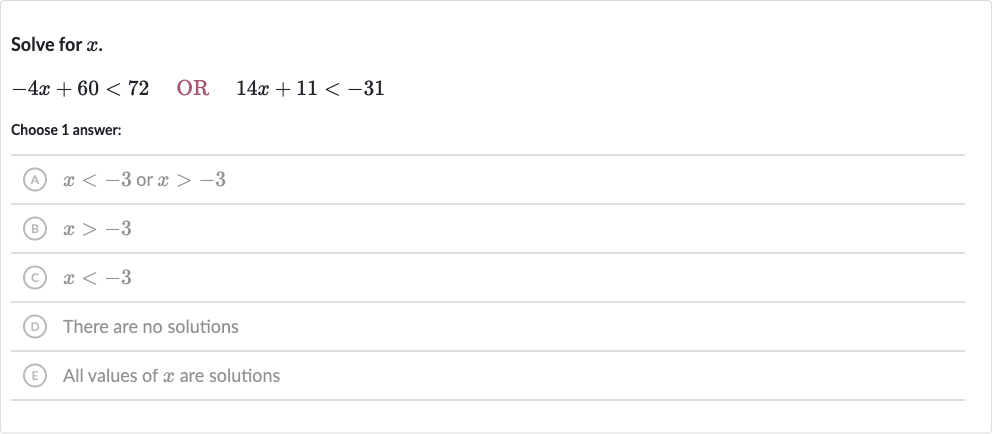Full solution
Q. Solve for .Choose answer:(A) or (B) (C) (D) There are no solutions(E) All values of are solutions
- Solving the first inequality: First, let's solve the inequality -4x + 60 < 72.Subtract from both sides to isolate the term with .-4x + 60 - 60 < 72 - 60-4x < 12Now, divide both sides by . Remember that dividing by a negative number reverses the inequality sign.\frac{-4x}{-4} > \frac{12}{-4}x > -3
- Solving the second inequality: Next, let's solve the inequality 14x + 11 < -31.Subtract from both sides to isolate the term with .14x + 11 - 11 < -31 - 1114x < -42Now, divide both sides by to solve for .\frac{14x}{14} < \frac{-42}{14}x < -3
- Contradiction and no solution: Now we have two inequalities:x > -3 from the first inequality, andx < -3 from the second inequality.These two inequalities contradict each other, as there is no number that is both greater than and less than at the same time.Therefore, there are no values of that satisfy both inequalities simultaneously.
More problems from Is (x, y) a solution to the system of linear inequalities?
QuestionGet tutor help
QuestionGet tutor help
QuestionGet tutor help
QuestionGet tutor help
QuestionGet tutor help
QuestionGet tutor help
QuestionGet tutor help
QuestionGet tutor help

